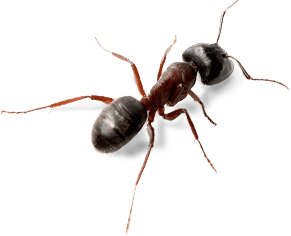Why The Little Black Ants That Are Prevalent In New York State Can Be Very Difficult To Eliminate From Infested Homes
With the exception of flies, residents of New York state consistently rank ants as the most frequent home-invading insect pests. Luckily for New York residents, the ant species that inflict highly venomous stings to humans can only be found in the southern states. However, the potentially dangerous Asian needle ant and European fire ant species can both be found in New York, but they are not the most common indoor ant pests in the state. While medically hazardous ant pest species are largely absent from New York, several ant species that are known for establishing particularly stubborn indoor infestations are abundant in the state. One such species, Monomorium minimum, is known for occasionally nesting within woodwork and other inaccessible indoor areas, such as wall voids. These ants are more commonly known as “little black ants,” and they can be recognized for their jet black exterior and exceptionally small size of around 1/16 of an inch in length.
In their natural habitat, little black ants nest beneath rocks, within decaying wood, and beneath landscaping ornaments and leaf litter on lawns where small dirt craters in turf grass indicate their presence. Their colonies are relatively large, as they grow to contain more than 10,000 workers that establish multiple secondary nests while foraging away from their primary nest. Colonies also contain many queens that can become separated from the primary nest and establish multiple reproductive nesting sites within concrete or brick masonry foundations and indoor wall voids. When these ants invade wall voids they may burrow within structural lumber if the wood is adequately moist, but they are not as destructive to structural wood as carpenter ants.
Little black ants will eat a wide variety of foods, and large numbers are often discovered in kitchen cupboards and pantries. Some of the most common food sources consumed by these ants within homes include grease, oil, meat, nuts, fruit, vegetables and sweets. Due to their small size, reproductive potential and habit of nesting within inaccessible or heavily obscured locations, extensive little black ant infestations can be quite difficult to eradicate. Outdoor nests can be destroyed with insecticide applications, and pest control professionals inject aerosol insecticides into wall voids in order to exterminate hidden nests. However, if a pest control professional is unable to locate all indoor nesting sites, baits can be used. While baiting systems may take more than a week to destroy all ant pests, they are highly effective for treating little black ant infestations.
Have you ever found exceptionally small ants in your home in large numbers?


Comments are closed.